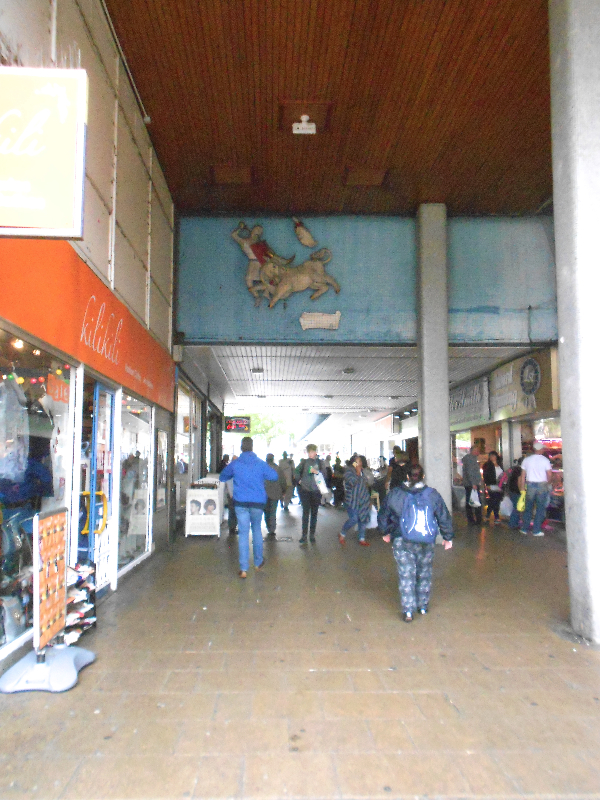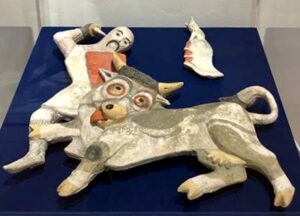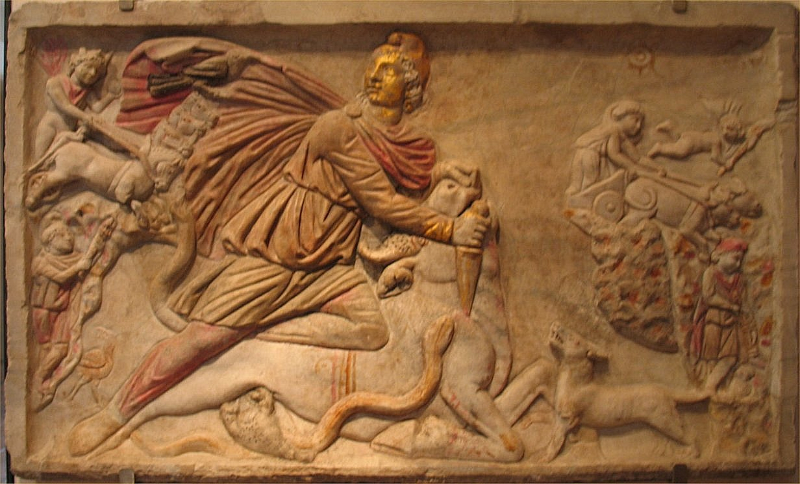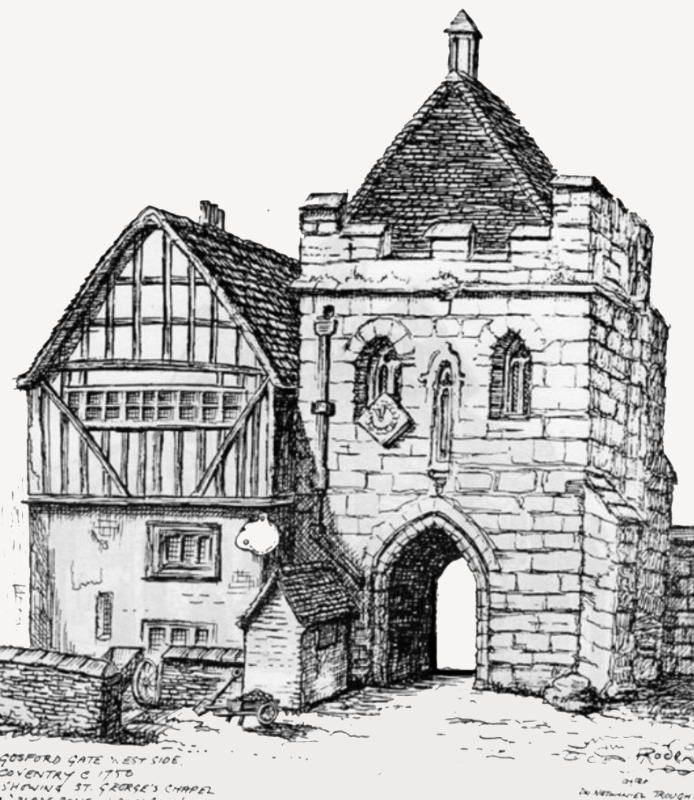Sir Guy and the Dun Cow by Alma Ramsey

Sir Guy and the Dun Cow by Alma Ramsey

Sir Guy and the Dun Cow by Alma Ramsey is mounted on the archway above the pavement between Bull Yard and Shelton Square. It is an interesting sculpture and it has not always been at this site.

It was originally commissioned by Donald Gibson for Broadgate House (along with the Lady Godiva clock and Coventry People statue both by Trevor Tenant, the Martyrs Mosaic by Hugh Richard Hosking and many carved designs by John Skelton on the stone pillows facing Broadgate). Donald Gibson wanted lots of public art in the City Centre, especially on buildings. As Broadgate House was the first building to go up in the new regeneration of the city centre, after the Second World War, Gibson commissioned the works of art. This work of art, ‘Sir Guy and the Dun Cow’, was first mounted on the north side of Broadgate House on the inside wall above the stairwell from the precinct steps to the walkway balcony around the precinct south side. (See photographs below to understand how hidden it was).

Sir Guy and the Dun Cow’ was first displayed on the inside of this wall, it could only really be seen properly when you were going down the steps from the balcony; it was all taken away, when it was changed to ramps.
Alma Ramsey was born in Tunbridge Wells and studied in Bournemouth School of Art and the Royal College of Art, London under Gilbert Ledward and Henry Moore. She was married to Hugh Richard Hosking who designed the Martyrs Mosaic, in Broadgate House for Donald Gibson. Alma was also commissioned by Sir Basil Spence to make the Nativity Figures for the New Cathedral.
The original scale model or maquette, for the ‘Sir Guy statue’ is in a showcase in the visual storage part of the Herbert Art Gallery and Museum basement.

The story of the Sir Guy is an old one. Guy was the son of the steward to the Earl of Warwick. When he was sixteen years old he fell in love with the Earl’s daughter. Her name was Felice, but she would have nothing to do with him. So he set out to make a name for himself. He killed the Dun Cow which was ravaging Dunsmore Heath. He went on to kill a boar at Slough, then he traveled across Europe and fought the Saracens at Constantinople. On his return he killed a dragon for Aethelstan at York. All this killing and bravery impressed Felice and she married him.
Not long after the marriage the Earl of Warwick, her father, died making Guy a ‘Sir’. But he was troubled by all the killing he had done and went on a pilgrimage to the Holy Land. On his way he found Aethelstan besieged at Winchester by the Danes. This is where he got into a duel with Colbrand a Danish champion. On his return to Warwick he lived as a hermit in a cave at Gibbeclyve, now known as Guy’s Cliffe. His wife Felice did not know that he was back from his travels and living so close. She only found out when Guy was on his death bed. She may have passed by him many times on the road but he would have looked like all the other poor people and beggars at that time. Felice was so upset when he died that she jumped to her death off the cliff into the River Avon; the spot is now know as Guy’s Leap, not Felice’s leap!
Guy’s Cliffe, being the site of the legend of Guy when he was a hermit living in his cave on the cliffs looking over the river (known as Guy’s Cave). Guy’s well or spring is nearby and the River Avon flows from north to south-east through the site.
Coventry’s local historian David McGrory thinks that Guy’s Cave may have been previously use as an underground temple by the Roman soldiers when Britain was part of the Roman Empire. They would have worshipped ‘Mithras’. The Temples of Mithras are usually sunk below ground, windowless and very distinctive, converted from a natural caves. Mithraic temples were common in the Roman Empire; with considerable numbers found in Rome and other parts of Europe. Mithras-worship was characterised by images of the god slaughtering a bull. Other images of Mithras are of him banqueting with Sol, the Sun God and depictions of his birth, which shows Mithras coming from out of rock like the water in a spring. The religion was all male and was inspired by Persian worship of the god Mithra. The legend of Sir Guy and his killing of the bull are very similar to the legends of Mithras; local people could have got the two legends muddled up over time especially with no written accounts.
(There is a very good talk about ‘The Cult of Mithras’ on BBC Radio 4 ‘In our time’ last on 27th Dec, 2012 you can get it on Podcast). The Cult of Mithras, In Our Time – BBC Radio 4

It was said that the shoulder bone of the ‘Dun Cow’ was hung on St. George’s Chapel, next to Gosford Gate, part of Coventry’s city wall. However it was most likely a Killer Whale/Orca shoulder bone brought back by a traveller or a sailor and displayed as a novelty.

